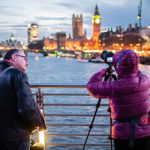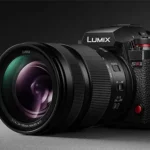
In order to separate the subject from the background, an edge light is in order. Objects lit from behind, hiding the source from the lens approach the eye in a direct manner, flaunting their power while reveling in the dark.
Look for subjects dark in color, but having texture and reflective properties. A wine red satin, a bolt of navy and dark gold tapestry, crushed velvet in chocolate tones or a black ceramic cup edged in filigree lace are all candidates for a low key picture.
Face lighting can be from the side – a broad source well masked against spill light. Small but powerful spots can provide a key light for emphasis of important detail. An interesting fact is that extra light thrown on a black background will produce blacker blacks in the important areas. The reason is that the extra light raises the exposure curve to include the expanded range of tones near the top of the curve. Therefore, the blacks are expanded darker as well as placing more detail in the highlights. In order to ascertain the correct exposure, read the light from a 10 per cent gray card rather than from the subject. Bracket for safety.

A large black umbrella is a handy tool for producing a low key portrait in medium toned environments. Placed to the right of the camera just out of range of the lens, the umbrella will deepen the tones facing and close to the camera. Generally, a soft light from a broad source like a large window covered with Venetian blinds for control is ideal for a low key picture. You can 
Experiment with the composition, turning the subject and changing the subject’s activity for variety. If you succeed, the viewer’s eye will be riveted on the subject and there will be no mistaking the mood.
Many of my wedding portraits were taken with a short light and a dark background. Comments welcome.
Like This Article?
Don't Miss The Next One!
Join over 100,000 photographers of all experience levels who receive our free photography tips and articles to stay current:






Leave a Reply